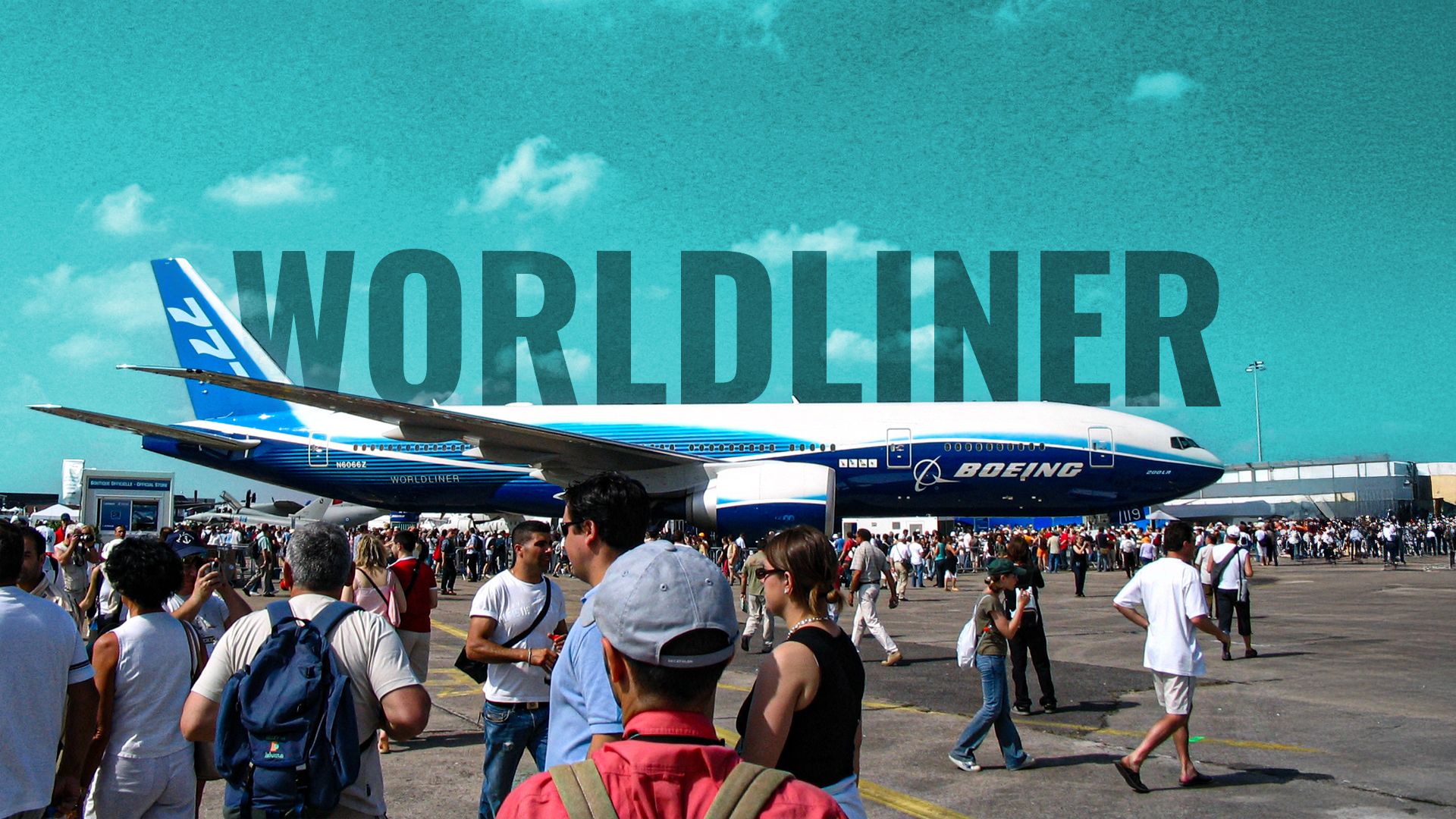World
Boeing 777-200LR Sets World Record for Nonstop Flight Distance

On November 10, 2005, the Boeing 777-200LR made aviation history by completing a nonstop flight that spanned an impressive 11,664 nautical miles (21,601 kilometers). The aircraft departed from Hong Kong International Airport (HKG) on November 9 and landed at London Heathrow Airport (LHR) after a remarkable journey lasting 22 hours and 42 minutes. This achievement was officially recognized by the Guinness World Records, marking a significant milestone in commercial aviation.
Captain Suzanna Darcy-Henneman, who was also the first female production test pilot in Boeing’s history, commanded this record-breaking flight. Her leadership took the aircraft N6066Z from the Pacific to the Atlantic, showcasing the 777-200LR’s capabilities. The aircraft, known as the “Worldliner,” was powered by the GE90-115B engines, which were the most powerful commercial turbofan engines at that time.
The successful flight from HKG to LHR was not only a personal achievement for Captain Darcy-Henneman but also a testament to Boeing’s engineering prowess. Lars Andersen, Vice President and Program Manager of the 777 Program at Boeing Commercial Airplanes, remarked, “The 777 has been a leader in its market ever since it first went into service. The 777-200LR Worldliner continues that market leadership by offering unmatched capability that allows airlines to offer passengers nonstop routes to their destinations.”
Record-Breaking Journey and Specifications
The Boeing 777-200LR’s record-setting route crossed the International Date Line, traversing the mid-North Atlantic Ocean before arriving in London. The aircraft averaged a speed of 981 kilometers per hour (609 miles per hour) from Los Angeles to New York and 910 kilometers per hour (565 miles per hour) from New York to London. This flight eclipsed the previous distance record set by a 747-400 in 1989, which flew 9,200 nautical miles (17,039 kilometers) from London to Sydney. It also surpassed the 777-200ER’s 10,823 nautical miles (20,044 kilometers) journey from Seattle to Kuala Lumpur in 1997.
The 777-200LR was designed for long-haul flights, featuring a capacity of 301 seats with an operational range of 9,420 nautical miles (17,445 kilometers). However, only 61 units were produced due to the specialized market for ultra-long-haul travel. The aircraft’s design prioritized fuel capacity, which limited its payload but allowed it to achieve extraordinary distances.
The specifications of the 777-200LR include:
– Seats: 317 (2-class configuration)
– Maximum Range: 8,555 nautical miles (15,843 kilometers)
– Length: 63.7 meters (209 feet 1 inch)
– Wingspan: 64.8 meters (212 feet 7 inches)
– Height: 18.6 meters (61 feet 1 inch)
– Engine: GE90-115B
Legacy and Ongoing Impact
Despite its initial passenger production phase concluding, the 777-200LR has found success in the freight market. Its design characteristics make it particularly suitable for cargo transport, and some earlier passenger models are being converted into freighters. The airframe serves as a foundation for the Boeing 777 Freighter (777F), which utilizes the fuselage of the -200LR but incorporates the larger gross weight and wings of the -300ER.
The Boeing 777 family has played a critical role in the evolution of commercial aviation. It marked a shift towards the use of long-range twinjets, gradually replacing older quadjet aircraft like the iconic 747 and the Airbus A380. The baseline 777-200 became the first aircraft to achieve ETOPS-180 certification, significantly contributing to the safety and efficiency of long-haul air travel.
Captain Darcy-Henneman, who piloted the 777-200LR on its maiden flight, expressed her pride in being part of the aircraft’s legacy: “The 777-200LR’s ability to connect the world is amazing. Flying the first flight is an honor and a rare opportunity.”
The introduction of the 777-200LR and its extended range counterpart, the 777-300ER, has paved the way for innovations in aviation technology. The advanced fly-by-wire system and integrated avionics of the 777 laid the groundwork for future aircraft, including the 777X and 787 Dreamliner.
As the aviation industry continues to evolve, the 777-200LR remains a symbol of exceptional engineering and innovation, demonstrating the potential for nonstop flight capabilities across the globe. With limited operators, including Air Canada, Qatar Airways, and Air India, the aircraft continues to serve high-demand routes that exceed 7,000 nautical miles, such as Air India’s Bengaluru–San Francisco route at 8,691 nautical miles.
With its unique characteristics and historical significance, the Boeing 777-200LR embodies the spirit of modern aviation and the relentless pursuit of excellence within the industry.
-

 Top Stories1 month ago
Top Stories1 month agoNew ‘Star Trek: Voyager’ Game Demo Released, Players Test Limits
-

 World1 month ago
World1 month agoGlobal Air Forces Ranked by Annual Defense Budgets in 2025
-

 World1 month ago
World1 month agoMass Production of F-35 Fighter Jet Drives Down Costs
-

 World1 month ago
World1 month agoElectrification Challenges Demand Advanced Multiphysics Modeling
-

 Science1 month ago
Science1 month agoTime Crystals Revolutionize Quantum Computing Potential
-

 Business1 month ago
Business1 month agoGold Investment Surge: Top Mutual Funds and ETF Alternatives
-

 Entertainment1 month ago
Entertainment1 month agoFreeport Art Gallery Transforms Waste into Creative Masterpieces
-

 Top Stories1 month ago
Top Stories1 month agoDirecTV to Launch AI-Driven Ads with User Likenesses in 2026
-

 Lifestyle1 month ago
Lifestyle1 month agoDiscover Reese Witherspoon’s Chic Dining Room Style for Under $25
-

 Health1 month ago
Health1 month agoGavin Newsom Critiques Trump’s Health and National Guard Plans
-

 Business1 month ago
Business1 month agoUS Government Denies Coal Lease Bid, Impacting Industry Revival Efforts
-

 Lifestyle1 month ago
Lifestyle1 month agoLia Thomas Honored with ‘Voice of Inspiration’ Award at Dodgers Event









